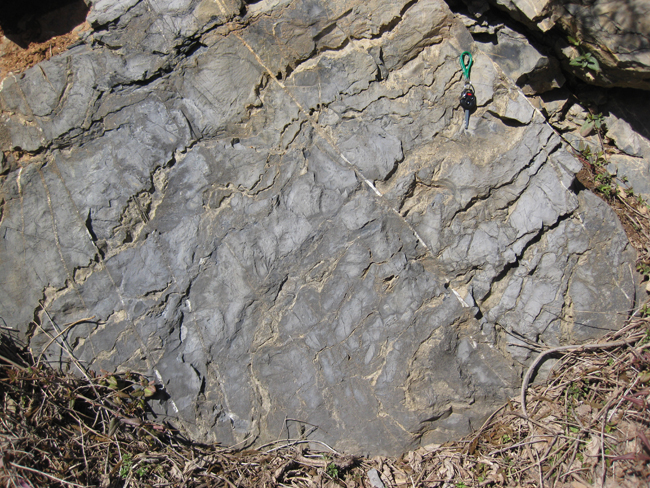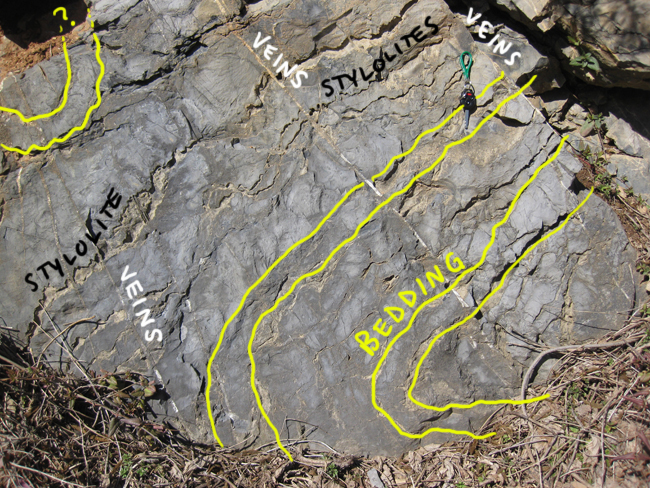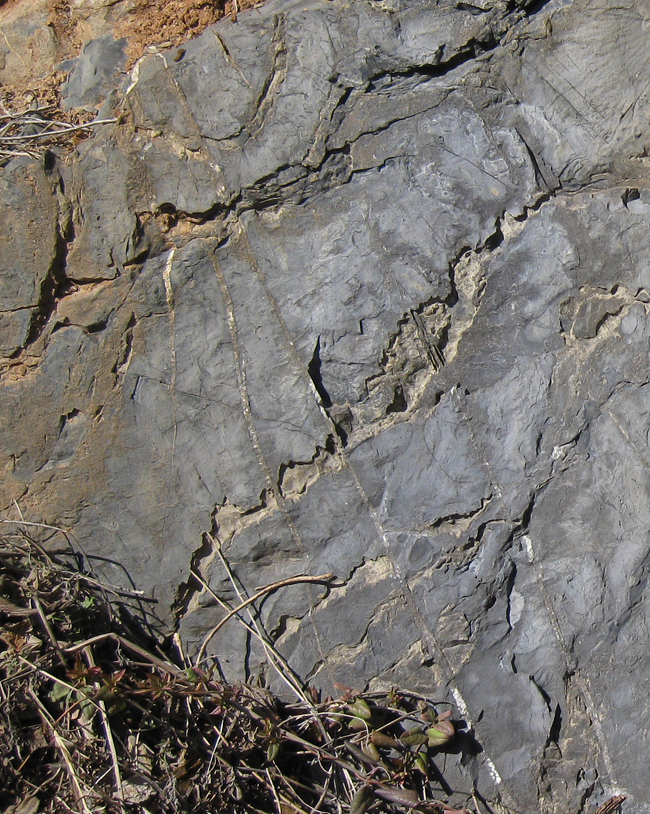22 March 2013
Friday fold: the case of the strangely stout stylolites
Posted by Callan Bentley
Today, we return to my field trip from last week, for a look at an odd outcrop of the Ordovician-aged Edinburg Formation:

Note the car key with green lanyard, to provide a sense of scale.
It’s folded, as the yellow bedding traces show in this annotated version:

But what really caught my eye about this outcrop were the odd stylolites (pressure solution “seams” with a wiggly morphology and a concentration of clay relative to the bulk limestone composition) and the veins of calcite. If you zoom in to the upper left portion of the outcrop face, you’ll see these odd features: note that (a) the veins cross-cut the stylolites, meaning they are younger, (b) the stylolites are THICK, (c) the stylolites are less resistant to weathering than the bulk gray limestone, and (d) the veins seem to be weathering slightly faster than the bulk gray limestone, but still far more slowly as compared to the stylolites. I suppose it should also be noted that the veins and stylolites are apparently approximately at right angles to one another – which would be consistent with them forming under the influence of the same stress field (again recalling the cross-cutting relationships noted above). There is also some offset observed across the veins, perhaps indicative of some motion along those fracture surfaces.

So what’s up with this? Are these really stylolites? If so, they must have had a lot of calcite squeezed out through pressure solution in order to accumulate that much (insoluble) clay along the stylolite surface. Any thoughts?
Oh, and: Happy Friday!


 Callan Bentley is Associate Professor of Geology at Piedmont Virginia Community College in Charlottesville, Virginia. He is a Fellow of the Geological Society of America. For his work on this blog, the National Association of Geoscience Teachers recognized him with the James Shea Award. He has also won the Outstanding Faculty Award from the State Council on Higher Education in Virginia, and the Biggs Award for Excellence in Geoscience Teaching from the Geoscience Education Division of the Geological Society of America. In previous years, Callan served as a contributing editor at EARTH magazine, President of the Geological Society of Washington and President the Geo2YC division of NAGT.
Callan Bentley is Associate Professor of Geology at Piedmont Virginia Community College in Charlottesville, Virginia. He is a Fellow of the Geological Society of America. For his work on this blog, the National Association of Geoscience Teachers recognized him with the James Shea Award. He has also won the Outstanding Faculty Award from the State Council on Higher Education in Virginia, and the Biggs Award for Excellence in Geoscience Teaching from the Geoscience Education Division of the Geological Society of America. In previous years, Callan served as a contributing editor at EARTH magazine, President of the Geological Society of Washington and President the Geo2YC division of NAGT.